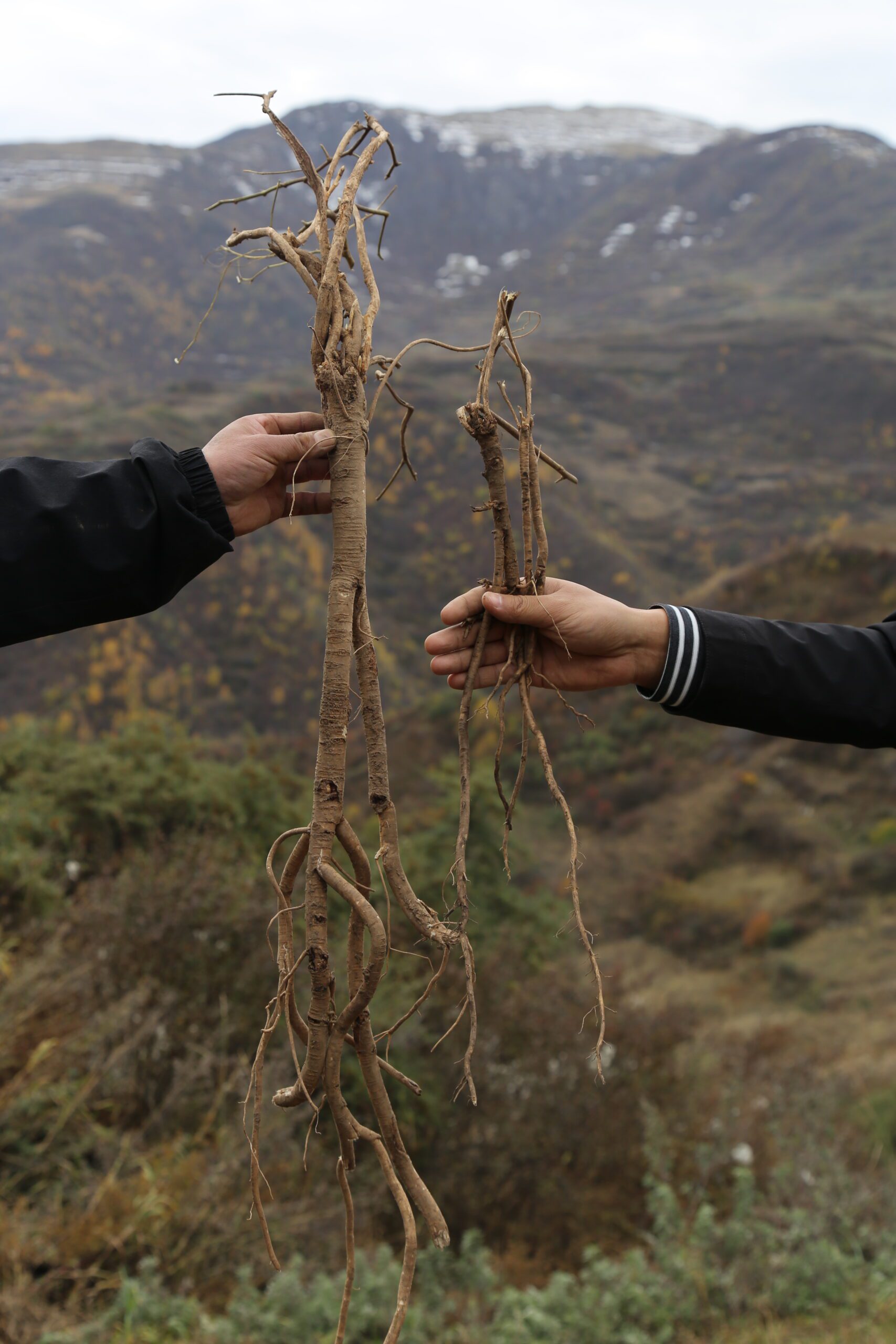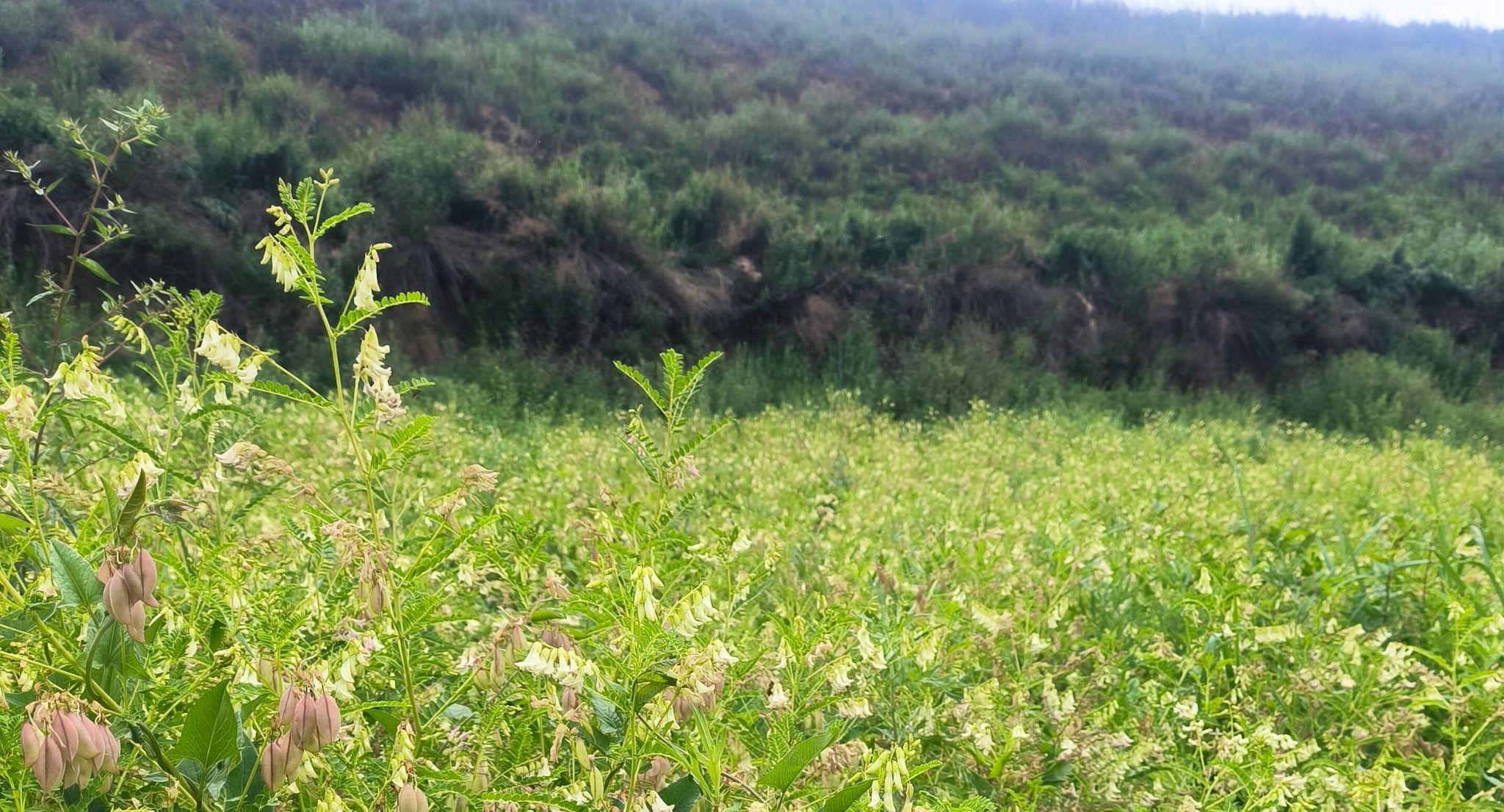Did you know that all herbs are not created equal? However, herbal potency is not easily identifiable visually. As a matter of fact, if we were presented two of the same herbs grown in different habitats, most of us would assume the bigger, more robust-looking specimen has greater potency. We’d be wrong. Natural herb tea’s potency matters! It comes from the herbs which go into the tea bags.
Our culture is programmed to often think bigger is always the better choice; however, when it comes to plants and herbs, that line of thinking should be reconditioned to helping us choose for optimal potency.
Why are wild-crafted herbs more potent and best for our health?
Case in point: compare the two herbs below:


Perhaps your natural inclination would be to choose the herb on the left; however, the one on the right side is actually far more potent. This is the reason why: It was grown organically in an environment with harsh conditions. When plants are stressed due to lack of water and nutrients or under cold temperature, they create more resveratrol, quercitrin and piceatannol. These are important polyphenols that help the plants survive. These elements are what makes the plant or herb much more potent.
The herb shown in the picture above is called Astragalus root, an adaptogen that is in many of Bravo Tea’s functional herb teas. The bigger root on the left is fertilizer grown from other commercial suppliers. The thinner looking root on the right is wild-grown for two years on our organic farm high in the Tibetan mountains for best potency.
What kinds of plants should we eat for better health?
In our food supply, many plants have very few of these defense molecules. The reason being is that we think the faster they grow, the better— and it is also more profitable for farmers. More product with less potency.
To better understand this concept, think about red wine. The best red wines are intentionally stressed. The vines are dehydrated with some having fungus growing on them. Believe it or not, these hardships actually make the wine taste better because of the xenohormetic molecules that are made under these conditions. The grapes are filled with color and contain the highest amount of resveratrol.
Why does Bravo Tea choose to grow wild-crafted herbs organically in a harsh environment?
Most herbs found in Bravo Tea come from the company’s own organic farms in the Tibetan plateau. Not only does this create the benefits of organically grown, stressful elements and longer growing time that provides herbal tea drinkers with maximum potency, it also is a sustainable model for the environment. It is with this scientific reasoning that Bravo Teas are some of the most potent teas.
The benefits of polyphenols, flavonoids and antioxidants from herbs grown in harsh conditions
Eating plants that are stressed can potentially benefit our health by increasing the presence of certain beneficial compounds. When plants experience stress, such as drought, they often produce higher levels of antioxidants and phytochemicals as a natural defense mechanism. These compounds, like polyphenols, flavonoids, and resveratrol, can offer unique health advantages for humans.
Consuming stressed plants may help us access a richer source of these compounds, which are known for their antioxidant and anti-inflammatory properties. By adding such resilient plants into our diets, we can harness their stress-induced nutrients, potentially improving our overall well-being and supporting our health.
Researches show the polyphenols from the plants activate or inhibit certain pathways or proteins in the body that are known to be important for health and longevity.
In Summary: A potent cup of the herb tea comes from the wild-grown herbs go into the tea bags. Herbs that grow in harsh environments or are wild-grown often yield more beneficial compounds due to the challenges they face in their natural habitat. These challenges, such as extreme temperatures, limited water availability, and competition from other plants, compel these herbs to develop a robust defense mechanism.
In response, they synthesize higher concentrations of phytochemicals and secondary metabolites like essential oils, terpenes, and polyphenols. These compounds not only help the plants survive in harsh conditions but also offer unique health benefits when consumed by humans.
Wild-grown herbs, untouched by artificial fertilizers or pesticides, can be particularly potent, as they evolve in sync with their ecosystem, accumulating diverse and complex bioactive compounds. When we add these herbs into our diets, we can tap into their rich reservoirs of phytochemicals, and benefit from their therapeutic and health supporting qualities.


To learn more about the benefits of stressed plants and how being more discerning with your plant and herb choices can lead to a longer, healthier life, please check out this amazing video interview with Dr. Sinclair at 57’ mark: What to Eat & When to Eat for Longevity | Lifespan with Dr. David Sinclair #2
Reference:
- Konrad T. Howitz and David A. Sinclair Xenohormesis: Sensing the Chemical Cues of Other Species https://www.cell.com/fulltext/S0092-8674(08)00511-4 2008.04.019
- Joseph A. Baur and David A. Sinclair. What is Xenohormesis https://www.ncbi.nlm.nih.gov/pmc/articles/PMC4775249/
- Am J Pharmacol Toxicol. Author PMC 2016 Mar 2. Am J Pharmacol Toxicol. 2008 Mar 31; 3(1): 152–159.
- Joseph A. Baur and David A. Sinclair. Therapeutic potential of resveratrol: the in vivo evidence https://www.med.upenn.edu/baurlab/pdfs/Therapeutic_potential_of_resveratrol.pdf
- Philip L. Hooper, Paul L. Hooper, Michael Tytell, and Lászlo Vígh Xenohormesis: health benefits from an eon of plant stress response evolution Cell Stress Chaperones. 2010 Nov; 15(6): 761–770. https://www.ncbi.nlm.nih.gov/pmc/articles/PMC3024065/




